|
|
|
|
|
|
PKD:
Autosomal Dominant Polycystic Kidney Disease in Persian Cats
David S. Biller, DVM, DACVR
Associate Professor and Head of Radiology, Department of Clinical Sciences
College of Veterinary Medicine, Kansas State University
Stephen DiBartola, DVM, DACVIM
Professor and Head of Small Animal Medicine
Department of Veterinary Clinical Sciences
College of Veterinary Medicine, The Ohio State University
Wilma J. Lagerwerf, RVT, RLAT, AHT
Ailsa Craig, Ontario, Canada
Polycystic kidney disease is an inherited kidney disease that has been found in Persian cats.
Feline Polycystic Disease (PKD) has been reported sporadically in literature since 1967, but actual study info into this renal disease did not begin until 1990. An affected six year old female Persian was referred to The Ohio State University teaching hospital with large kidneys and symptoms of renal failure that were ultimately diagnosed as PKD. Offspring of this female were used to start a colony and begin research into this condition.
Shown above is a 6 week old feline polycystic kidney. Pictured below are a normal feline kidney and an adult feline end stage polycystic kidney.
WHAT DOES THIS DISEASE CAUSE IN CATS?
Polycystic disease is a disease that shows up later in life (late onset) with enlarged kidneys and kidney dysfunction occurring between three and 10 years of age (on average at seven years of age). The condition is inherited and cysts are present from birth, but are smaller in younger animals. Cyst size can vary from less than 1 mm to greater than 1 cm in size, with older animals having larger and more numerous cysts.
Problems occur when these cysts start to grow and progressively enlarge the kidney, reducing the kidney's ability to function properly. The ultimate end is kidney failure. Some of the clinical signs are depression, lack of or reduced appetite, excessive thirst, excessive urination and weight loss. There is a marked difference in when and how quickly individual cats succumb, with the possibility of this developing late enough in life that the cat can die of other causes before kidney failure.
However, kidney failure is certain when the cysts can grow and cause problems. Rarely, cysts are also seen in other organs such as the liver and uterus.
HOW PKD IS DIAGNOSED
PKD is most easily diagnosed by ultrasound.
Ultrasound is a non-invasive imaging technique that can identify the disease very early in its course. All that is required is a mid-ventral abdominal area hair clip and a short time period for imaging to detect the presence of cysts. With the proper equipment and experienced personnel, this can be done as early as eight weeks of age. Usually, the older the cat the larger the cysts and the easier to detect. Ultrasound diagnosis is 98% accurate after approximately 10 months of age.
HOW DOES A CAT BECOME AFFECTED BY PKD?
PKD is not a contagious disease. Dr. David Biller of Kansas State University has recently completed studies and published results showing PKD to be an Autosomal Dominant inherited trait. Published results are in the Journal of Heredity. 1996:87:1-5.
As a quick review of genetics, an autosomal dominant gene is one which shows itself if it is present, even if inherited only from one parent. This means that a PKD free cat is also genetically PKD free. If a cat is PKD positive, then it must be either heterozygous (inherited the gene from one parent) OR homozygous (inherited the gene from both parents). In the chart below, simple Mendelian genetics are outlined to understand how this (and ANY autosomal dominant trait) condition is inherited.
WHAT IS THE TREATMENT FOR THIS DISEASE?
There is no specific treatment for this disease. Treatment is similar to treatment of chronic kidney failure of any cause. This treatment includes moderate dietary protein restriction using high biological value protein, dietary phosphorus restriction, providing fresh drinking water at all times, use of phosphate binders, and treatment of the anemia if necessary. Much more work needs to be done on polycystic kidney disease in cats to understand its underlying causes and devise effective treatment strategies.
HOW DOES A BREEDER ELIMINATE PKD FROM A BREEDING COLONY?
As PKD is the result of an autosomal dominant gene, it is relatively easy to track and eliminate. All breeding animals need to have an ultrasound to detect the presence of kidney cysts. It takes a few minutes with little or no sedation needed. If positive, then go back (if possible) and check parents.
The quickest way to eliminate the problem is to neuter and spay these individuals.
If a particular breeding stud or queen is extremely valuable, then it is still possible to produce kittens that are PKD negative, IF the other parent is PKD negative and IF the PKD positive parent is heterozygous. Refer to the charts below for the inheritance pattern(s).
When the produced kittens are old enough, an ultrasound can be performed to determine their PKD status. This way a replacement of the concerned bloodline can be chosen and the affected parent neutered. It is theorized that PKD is far more common in Persians than is currently diagnosed. With more study and published information about the disease, breeders and veterinarians can work to establish PKD-free breeding programs. In this manner this genetic health problem can be eliminated.
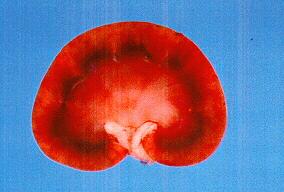 healthy kidney healthy kidney
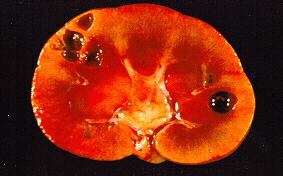 6 weeks kidney with PKD 6 weeks kidney with PKD
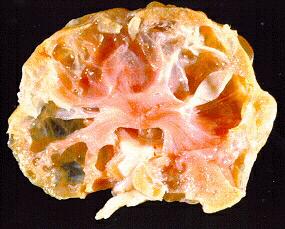 older PKD kidneys older PKD kidneys
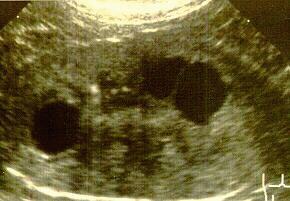 scan from kidney scan from kidney
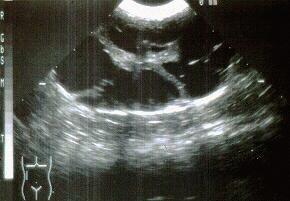 echo from PKD echo from PKD
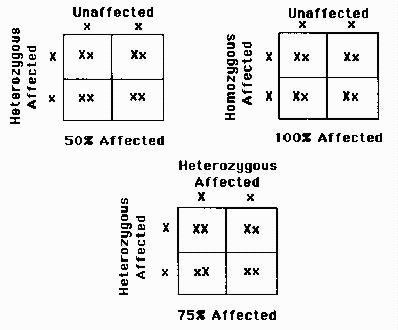 diagram diagram
Back to medical information.
| |